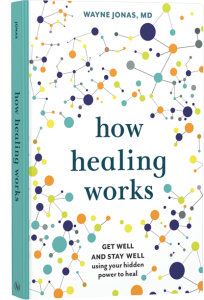A Holistic Approach to Peripheral Neuropathy
Joyce, age 63, was happy with the success of her breast cancer treatment. But when she went back to volunteering at her local library, she was surprised to realize she had trouble walking around the large space. Her hands felt cold and numb, and she sometimes had difficulty feeling her feet. After she tripped and almost fell, she realized it was time to talk to the nurse practitioner who was her primary care provider. Isabel explained that Joyce had a condition called peripheral neuropathy, which can happen with some cancer treatments, particularly the taxanes often used in breast cancer treatment. This condition can cause numbness, tingling, and pain in the hands, feet, fingers, and toes. It is also called CIPN for “chemotherapy-induced peripheral neuropathy.”
What causes peripheral neuropathy?
Chemotherapy—either the specific drug, dosage, or regimen—is responsible for these nerve problems. Certain drugs are more likely to cause peripheral neuropathy, including the taxanes, platinum drugs, vinca alkaloids, and drugs used to treat multiple myeloma. See our new Pocket Guide to Chemotherapy-Induced Peripheral Neuropathy for a more detailed list.
However, the choice is not between having chemotherapy and experiencing peripheral neuropathy, even if you take these drugs. The most important Integrative Health strategy may be talking with your health care provider—ahead of treatment if possible.
Joyce, in the story that opens this post, did not have that option because she didn’t know about peripheral neuropathy until later. Raising awareness about peripheral neuropathy is one reason we created the new pocket guide.
How common is it?
Not all chemotherapy agents cause peripheral neuropathy. Among those who are exposed to drugs known to cause this symptom, it is reported that 30% of patients continue to experience peripheral neuropathy at 6 months from completion of chemotherapy, with higher prevalence earlier in the course of treatment.[i]
Talking with your health care provider can help
Oncologist Alyssa McManamon MD recommends telling your cancer care team about your daily activities, interests, and work. For example, if your work requires fine motor skills, such as machining or playing an instrument, avoiding peripheral neuropathy may be extremely important. The same is true if your job involves a great deal of walking, such as work in the military, security, or outside sales.
If avoiding neuropathy is particularly important, your oncologist may create a less intensive chemotherapy schedule or use different drugs or doses than they would otherwise.
“It’s also important to keep lines of communication open,” says Dr. McManamon. If you notice bothersome side effects or even simple changes during your treatment, don’t hesitate to tell your care team about them. Many of us assume that side effects of chemotherapy are unavoidable or that nothing can be done to reduce them. But today, side effects from nausea to hair loss can be mitigated more effectively than in the past.
Integrative health solutions for CIPN
Some approaches to prevention include:
- Wearing tight socks and gloves during chemotherapy treatments. This may help prevent neuropathy from developing in the hands and feet.
- Wearing cooling socks and gloves for an effect similar to the “cold cap” that can help prevent chemotherapy-related hair loss.
- Acupuncture.
- Reflexology (a type of foot massage).
- Pain medications.
The American Society of Clinical Oncologists has reviewed prescription drugs to relieve pain related to peripheral neuropathy. So far, duloxetine is the only one they recommend. Some studies support the use of cannabidiol (CBD) products to relieve discomfort. A device called a “scrambler” can also be helpful at doing exactly what it sounds like—scrambling signals from the nerves to the brain to reduce pain.
Mind-body training for people with CIPN
Physical and occupational therapy can help manage the effects of having peripheral neuropathy. In particular, physical therapy, yoga, and tai chi can help with balance and strength, which are important to help prevent falls. You may also benefit from learning to walk more mindfully, attending to where you put your feet, what the walking surface is like, and how stable you feel at any given time.
Working with an occupational therapist can help you learn workarounds for numb or tingling hands, such as using a small tool to grasp objects if it is difficult to feel or hold them.
More resources
You may want to explore some of our free resources for coping with other cancer and treatment-related side effects, such as 10 Complementary and Lifestyle Approaches to Help with Breast Cancer Care (the approaches help people with other types of cancer, too).
Peripheral neuropathy is often part of life after cancer treatment ends. Five Steps to a New Normal has strategies for navigating survivorship.
Asking questions and talking with your health care provider is essential to helping to prevent and manage treatment-related side effects. To learn more about peripheral neuropathy, download the free Pocket Guide.
References
[i] Seretny, M., Currie, G. L., Sena, E. S., Ramnarine, S., Grant, R., MacLeod, M. R., Colvin, L. A., & Fallon, M. (2014). Incidence, prevalence, and predictors of chemotherapy-induced peripheral neuropathy: A systematic review and meta-analysis. Pain, 155(12), 2461–2470. https://doi.org/10.1016/j.pain.2014.09.020

Take Your Health Into Your Own Hands Drawing on 40 years of research and patient care, Dr. Wayne Jonas explains how 80 percent of healing occurs organically and how to activate the healing process. Learn More

